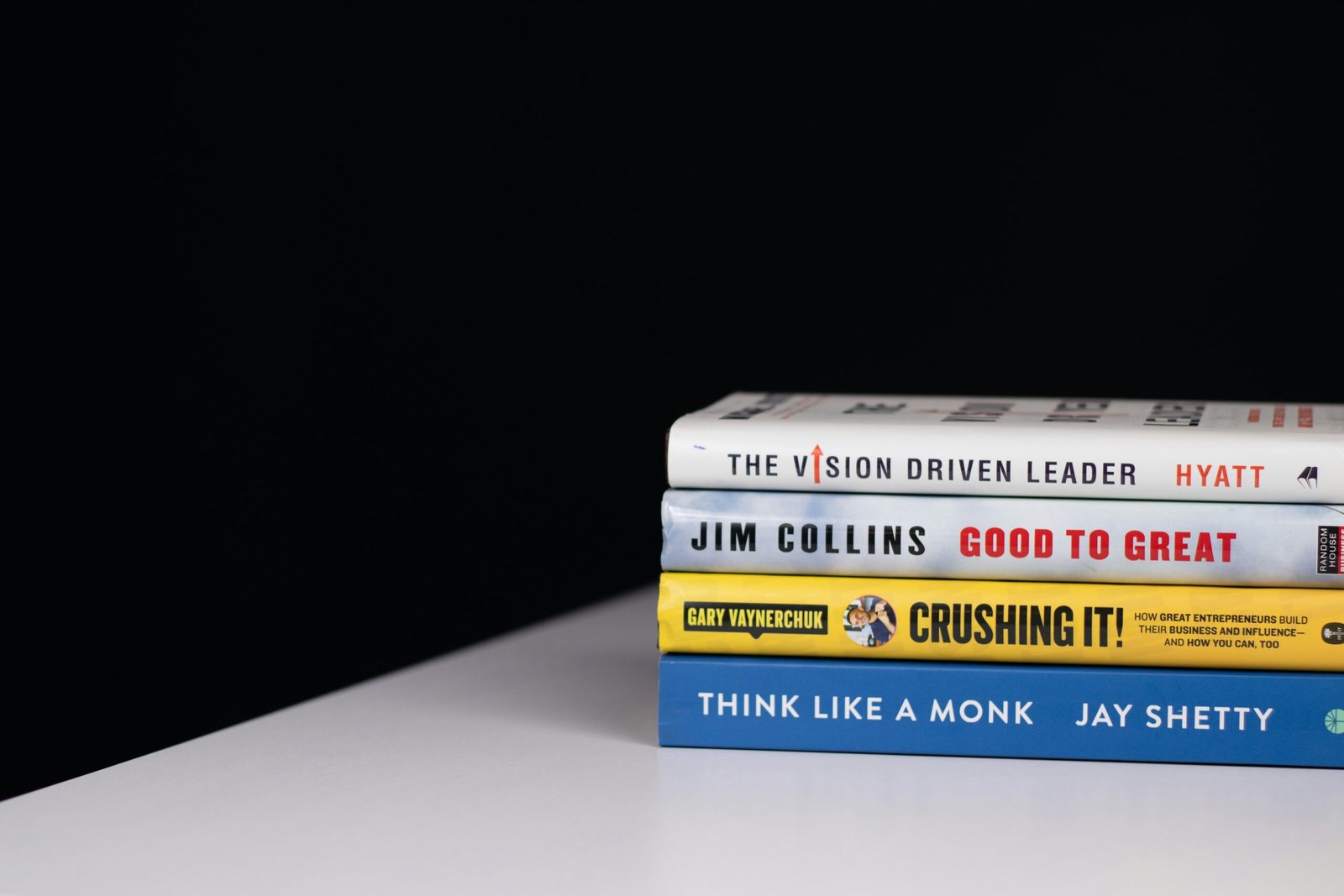The Daily Stoic (Kindle Edition) Review: 366 Meditations on Wisdom, Perseverance, and the Art of Living
What if you could start your day with a single paragraph that nudges your mindset in the right direction—calmer, clearer, less reactive? If you’re reading this, chances are you’re looking for a simple, repeatable practice that helps you handle stress, lead with purpose, and stay grounded when life tilts sideways. That’s exactly why The Daily Stoic has become a modern staple: it’s practical philosophy you can use before your second cup of coffee.
In this review, I’ll walk you through how The Daily Stoic (Kindle Edition) works, what makes it useful, and the best way to make it part of your daily routine. We’ll look at the big themes—control, perception, action, resilience—and why Stoicism still resonates with entrepreneurs, athletes, creatives, and anyone trying to live well in a noisy world. I’ll also share buying guidance to help you choose the right format, plus a few honest drawbacks so you know what to expect.
What Is The Daily Stoic (and Why It’s Everywhere)?
The Daily Stoic: 366 Meditations on Wisdom, Perseverance, and the Art of Living is a page‑a‑day guide to Stoic philosophy curated by Ryan Holiday and Stephen Hanselman. Each day features: – A short quote from a Stoic source—Marcus Aurelius, Seneca, Epictetus, and others. – A short commentary that translates the idea into modern life. – A theme for the month (e.g., clarity, self-control, action, acceptance).
The tone is calm and clear. The entries are concise. The point is not to impress you with ancient Greek, but to equip you with a daily lens—what the Stoics called a “prohairesis,” or rational choice—to respond rather than react.
If you’re new to Stoicism, this is a welcoming on‑ramp. If you’ve read Meditations or Letters from a Stoic, this gives you structure and repetition, which is how ideas become habits.
Why Stoicism Still Matters (Backed by Centuries)
Stoicism isn’t about suppressing emotions or turning into a robot; it’s about focusing on what you can control and practicing virtue in action. That’s why it’s remained relevant from Emperor Marcus Aurelius to today’s CEOs and coaches. You can read foundational, peer‑reviewed overviews of the school in the Stanford Encyclopedia of Philosophy and the Internet Encyclopedia of Philosophy.
Here’s why that matters now: – It’s antidote to overwhelm. Ground yourself in what’s in your control. – It’s action‑oriented. Don’t ruminate—act on what’s next and necessary. – It’s durable. The problems change; human nature doesn’t.
Modern psychology echoes this, too—resilience comes from reframing adversity and taking purposeful steps forward. For more on that overlap, see the APA’s primer on resilience.
How the Daily Entries Work (and How to Use Them)
Each month tackles a theme, and each day explores a facet of that theme. Read time? One to two minutes. The aim is consistency, not binge reading. Here’s a simple approach:
- Morning: Read the day’s passage. Note one actionable phrase.
- Midday: Pause for 30 seconds. Ask: “What’s in my control here?”
- Evening: Journal one sentence about how you lived the idea—or where you fell short.
This format turns philosophy into a routine, and routine into character. Want to try it yourself? Check it on Amazon.
If you’re already journaling, stack this on top. If you’re not, start with a minimal prompt: “What mattered today? What didn’t?” Over time, you’ll notice your attention shifting toward essentials and away from noise.
The Kindle Edition Experience: Fast, Portable, Highlightable
If you like frictionless reading, the Kindle edition shines. It’s searchable, portable, and built for highlighting. You can: – Highlight and export your favorite lines for weekly review. – Search keywords (e.g., “anger,” “discipline,” “fear”) when you need targeted advice. – Adjust font size and switch to dark mode for night reading. – Sync across devices so you never “forget the book at home.”
Pro tip: Create a notebook or tag in your notes app called “Daily Stoic—Practice.” When a passage hits, translate it into a one‑line rule: “Respond, don’t react,” “Focus on effort, not outcome,” “Choose the harder right.” Review those rules on Mondays as a quick reset. Ready to start a low‑friction daily practice? Buy on Amazon.
Big Ideas You’ll Encounter (And How They Land in Real Life)
Here are the themes that tend to stick—and why they matter when life gets messy.
- The dichotomy of control: You control your opinions, choices, and actions—not external events. This is the Stoic root system. It eliminates wasted energy and builds focus.
- Perception is a decision: The story you tell about events can either weaken or strengthen you. Change the view; change the next move.
- Action under constraints: Do what you can with what you have. Start where you are. It’s a habit of momentum, not perfection.
- Will and endurance: Life will test you. Endure and adapt. Not passively—intelligently.
- Memento mori: Remember that time is finite. That doesn’t invite dread; it invites urgency and gratitude.
- Character over outcomes: You can’t promise the result, only your effort and integrity. This is the bedrock of trust—in yourself and from others.
As you read day after day, these ideas stop being slogans. They become default settings.
Who Will Love This Book (And Who Might Not)
You’ll likely love The Daily Stoic if: – You want a short, daily mental tune‑up. – You’re building a morning routine or journaling habit. – You prefer crisp, practical commentary over academic deep dives.
You might not love it if: – You want long, scholarly essays with heavy context. – You dislike repetition—daily practice is, by nature, repetitive. – You’d rather read primary sources only and form your own commentary.
If this sounds like your pace, See price on Amazon.
To be fair, the repetition is part of the utility. Like strength training, you revisit the same moves to get stronger. The commentary varies, but the core principles—control, virtue, action—show up again and again on purpose.
Which Edition Should You Buy? Hardcover vs. Paperback vs. Kindle vs. Audio
Let me make this simple. Pick the format you’ll actually read every day.
- Kindle Edition: Best for portability, quick morning reads, and highlighting. Ideal if you travel or read on your phone.
- Hardcover: Great as a desk companion. Feels substantial, and it’s gift‑worthy. Easy to flip to today’s date and keep visible.
- Paperback: Budget‑friendly and light; good for tossing in a backpack.
- Audiobook: Useful if you commute. Less ideal for “stop and think” moments, but great for building familiarity.
A few buying tips: – If you already use Kindle for other daily reads, go Kindle for frictionless habit‑forming. – If you’re gifting, go hardcover—it signals “keep this on your shelf.” – If you want to review highlights weekly, Kindle has a clear edge.
Compare formats and pick what fits your routine: View on Amazon.
A 7‑Minute Daily Stoic Routine (That Actually Sticks)
Consistency beats intensity. Here’s a simple routine you can adopt tomorrow.
Morning (4 minutes): 1. Read the day’s entry. 2. Write one sentence: “What does this look like in action today?” 3. Pick a trigger—email, a meeting, a workout—and decide how you’ll practice the idea there.
Afternoon (1 minute): – Micro‑check: Ask “In my control or not?” Adjust your response accordingly.
Evening (2 minutes): – Journal: One win, one miss, one refinement for tomorrow.
This is small by design. Stoicism isn’t about grand gestures; it’s about steady, daily choices.
Notable Voices Inside the Book
The curation draws on: – Marcus Aurelius, the philosopher‑emperor, whose private notes became Meditations. – Seneca, a statesman and playwright whose letters mix philosophy with life advice. – Epictetus, a former slave whose teachings lay at the heart of practical Stoicism. – Lesser‑known figures like Zeno, Cleanthes, and Musonius Rufus.
If you want to taste primary texts alongside, pair entries with one page of a classic—Marcus Aurelius’ Meditations is even available free through Project Gutenberg. The commentary helps you connect those ancient lines to modern decisions.
Is It Worth It? Price, Value, and Payoff
Short answer: if you follow through, yes. This isn’t a shelf trophy; it’s a tool. For the cost of a couple coffees, you get a year of mental conditioning nudging you toward clarity and courage. The real ROI shows up in calmer decisions, better boundaries, and more consistent action.
Want a signal boost for your daily habit? Set a 7 a.m. calendar nudge titled “The Day’s Stoic Idea,” and leave the book open to today’s page on your nightstand (or pin the Kindle book to your home screen). See today’s deal and decide if it’s worth your daily habit: Shop on Amazon.
Common Criticisms (And My Take)
- “It’s repetitive.” True—and that’s also the point. Good principles deserve daily rehearsal. Expect overlap, especially around control and response.
- “The commentary is too modern.” The tone is contemporary by design. If you want the raw text, pair it with a primary source; using both is powerful.
- “Daily entries feel short.” Yes—on purpose. This is a prompt to act, not a long meditation session. Use a journal to expand where you need depth.
If you prefer a deeper monthly dive, consider reading one classic Stoic work in parallel and using this as the daily spark.
How It Compares to Similar Books
If you’re trying to pick the right daily reader or companion text: – The Daily Stoic vs. Meditations (Marcus Aurelius): Meditations is raw, personal, and elliptical. The Daily Stoic guides you through the ideas with helpful context. – The Daily Stoic vs. Letters from a Stoic (Seneca): Letters is longer‑form, narrative, and rhetorical. The Daily Stoic is quick and structured. – The Daily Stoic vs. Obstacle Is the Way (Holiday): Obstacle is a narrative book on turning trials into triumph. Daily Stoic is your ongoing practice. – The Daily Stoic vs. Daily Laws (Robert Greene): Both offer daily entries; Stoic entries lean virtue‑first and behaviorally practical.
For more background and articles on applying these ideas, browse the official Daily Stoic website or the Stanford Encyclopedia entry on Stoicism.
Troubleshooting Your Practice: Common Roadblocks
- “I skip days.” Don’t catch up—just read today. Stoicism is about the present choice.
- “I don’t know how to apply this.” Translate the day’s idea into one rule of thumb and try it in one situation.
- “I forget what I read.” Highlight one line. Review highlights every Sunday for 5 minutes.
- “It feels abstract.” Add a “therefore” after the entry: “Therefore, I will do X today.”
Let me explain why this works: small commitments reduce friction, and friction—not motivation—is often the real enemy of habit.
Further Reading and Reliable Resources
- Stoicism overview: Internet Encyclopedia of Philosophy
- Academic perspective: Stanford Encyclopedia of Philosophy—Stoicism
- Primary text: Marcus Aurelius’ Meditations (Project Gutenberg)
- Modern applications and essays: Daily Stoic
- Resilience basics: American Psychological Association—Resilience
FAQ: The Daily Stoic (Kindle Edition)
Q: Is The Daily Stoic good for beginners? A: Yes. The entries are short, the commentary is plain‑spoken, and the structure makes it easy to build a habit.
Q: Do I need to read it in order, starting January 1? A: No. Start today, read today’s date, and keep going. The monthly themes help, but you won’t lose anything by starting midyear.
Q: How long does each entry take to read? A: One to two minutes. Many readers pair it with a quick journal prompt for another two minutes.
Q: Will I miss anything by choosing the Kindle edition? A: You’ll gain search, syncing, and highlighting. If you love the feel of a book on your desk, hardcover may feel more “present,” but the content is the same.
Q: Is this just quotes, or is there commentary? A: Every day includes a quote and a short commentary that connects the idea to modern challenges and choices.
Q: What’s the best way to make the lessons stick? A: Translate each day into a one‑line rule, practice it in one scenario, and review your highlights weekly.
Q: How does this compare to reading Meditations directly? A: Meditations is profound but dense for some readers. The Daily Stoic provides context and application, making it easier to live the ideas day by day.
Q: Can I use this with a team or family? A: Absolutely. Many teams read an entry at stand‑up meetings, and families share one line at breakfast. It sparks focused conversation.
The bottom line: The Daily Stoic (Kindle Edition) is a small daily commitment with an outsized return—calmer decisions, clearer priorities, and a sturdier sense of self in a chaotic world. Start with today’s entry, capture one line, and test it in the next hard moment; that’s how philosophy becomes a life, not just a book. If you want more book‑tested routines and practical tools like this, consider subscribing—I share weekly playbooks you can use right away.
Discover more at InnoVirtuoso.com
I would love some feedback on my writing so if you have any, please don’t hesitate to leave a comment around here or in any platforms that is convenient for you.
For more on tech and other topics, explore InnoVirtuoso.com anytime. Subscribe to my newsletter and join our growing community—we’ll create something magical together. I promise, it’ll never be boring!
Stay updated with the latest news—subscribe to our newsletter today!
Thank you all—wishing you an amazing day ahead!
Read more related Articles at InnoVirtuoso
- How to Completely Turn Off Google AI on Your Android Phone
- The Best AI Jokes of the Month: February Edition
- Introducing SpoofDPI: Bypassing Deep Packet Inspection
- Getting Started with shadps4: Your Guide to the PlayStation 4 Emulator
- Sophos Pricing in 2025: A Guide to Intercept X Endpoint Protection
- The Essential Requirements for Augmented Reality: A Comprehensive Guide
- Harvard: A Legacy of Achievements and a Path Towards the Future
- Unlocking the Secrets of Prompt Engineering: 5 Must-Read Books That Will Revolutionize You







